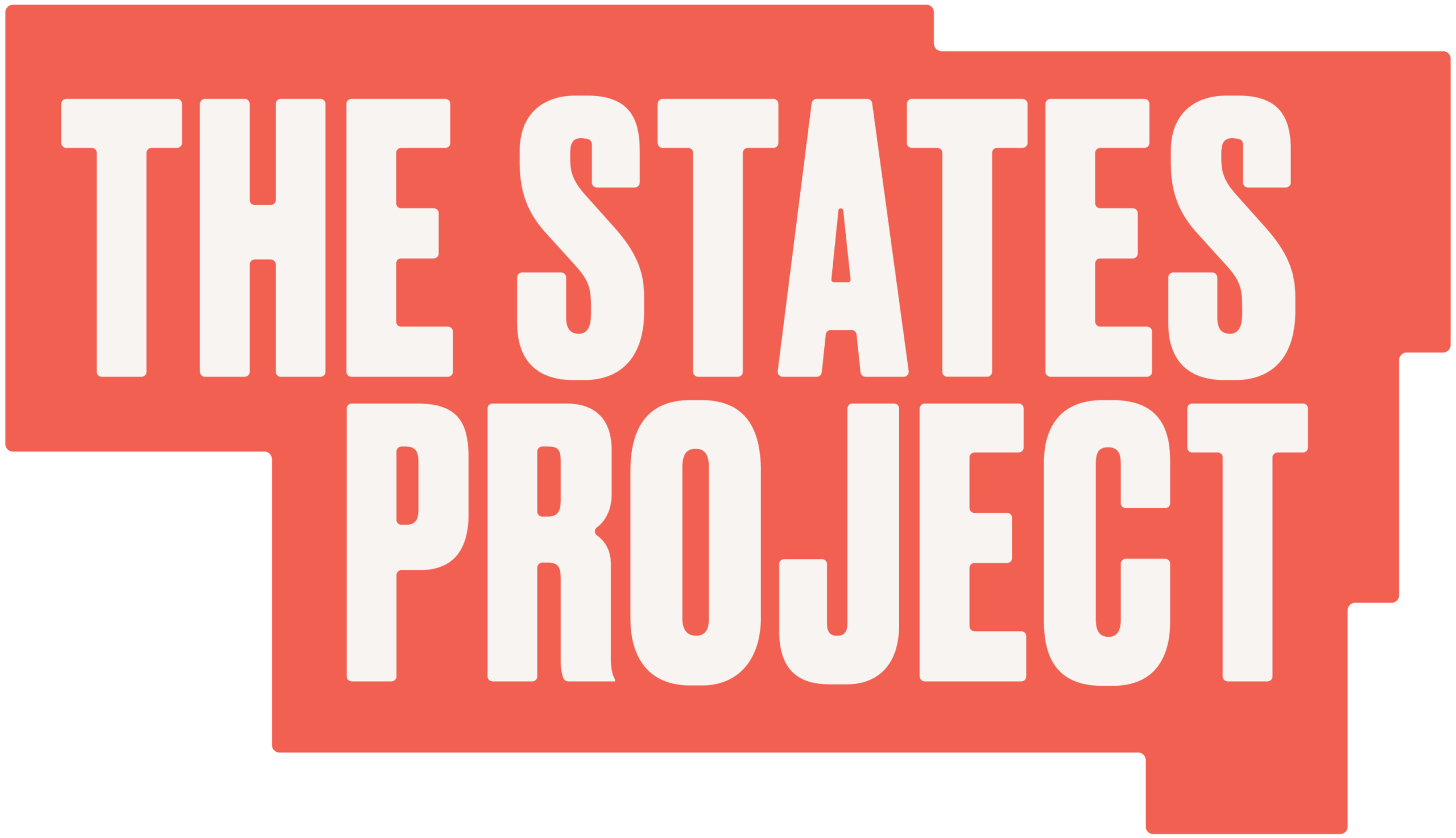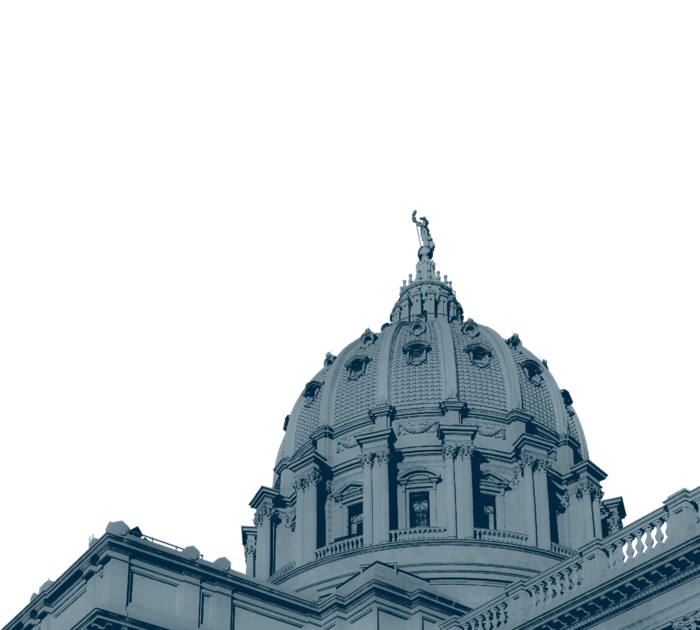The States Project helped state legislative candidates dramatically overperform the top of the ticket and notch crucial wins in a tough political environment. It’s time for national Democrats to take notice.

As the dust from the 2024 election cycle continues to settle, one thing has become clear: Even on a difficult night for Democrats on the national stage, state-level candidates dramatically overperformed the top of the ticket — notching important wins in several key state legislative chambers while minimizing losses in others, despite the difficult political environment.
While votes are still being counted in some battleground states, pro-democracy lawmakers remain on track to turn in a strong performance at the state legislative level relative to the national Democrats whose names appeared first on the ballot. Here’s what we know so far:
- Pennsylvania: TSP fueled the successful defense of the one-seat House majority in a state where the Democratic Party lost every single statewide office and the presidency.
- North Carolina: TSP made possible breaking the Republican supermajority in the House, ensuring Gov.-elect Josh Stein’s veto power and providing a crucial check on the majority’s extreme rightwing agenda.
- Wisconsin: Running on fairer maps for the first time, TSP powered 10 flipped seats in the Assembly and won all four target races in the Senate, putting the party in a strong position to challenge for the majority in both chambers in 2026.
- Maine: With the help of TSP, Democrats successfully defended their majority in the Senate and appear on track to do the same in the House — maintaining a governing trifecta even as Trump gained ground at the presidential level and claimed one of the state’s electoral votes.
- Arizona: Powered by TSP’s investment, Democrats were able to minimize losses in both chambers — losing only one seat in the Senate and two in the House, even as the state swung to Donald Trump at the top of the ticket. This result keeps Democrats within striking distance and sets up another push to break unified Republican control of the legislature in 2026.
- Minnesota: Even as Kamala Harris underperformed expectations in the state, TSP powered Democrats’ successful defense of their majority in the Senate in a special election and have tied control of the House in a tough year. In 2016, when Hillary Clinton won the state by a similar margin as Harris in 2024, there was a 20 seat rightwing majority.
Of course, there was bad news elsewhere. Democrats couldn’t fully withstand Trump sweeping to victory in Michigan, ultimately losing their narrow House majority in the state. And in New Hampshire, Kelly Ayotte’s strong performance in the gubernatorial race provided significant down-ballot coattails that helped Republicans strengthen their majorities in both chambers.
Despite these disappointments, Democratic state legislative candidates appear to have run ahead of the ticket in many key battleground states — a significant reversal of past trends, which have typically seen down-ballot candidates in competitive seats underperform their presidential candidate by 5 points depending on the state. But the results we had in North Carolina, Wisconsin, Pennsylvania, and Maine depended on us doing much better than that in key districts.
This didn’t happen by accident. It is the result of tireless work from countless candidates and campaigns across the country, powered by The States Project’s proven playbook:
- Big-League Investment. When we stop treating state legislatures like the minor leagues and start investing in them like the vital races they are, we can win.
- Data-Backed Tactics. When campaigns utilize tried-and-tested tactics that have proven to be effective up and down the ballot, we can win.
- Values-Based Message. When candidates consistently drive an inspiring, relevant message about their shared commitment to realizing the American promise and ensuring government meets people where they are, we can win.
This approach has been tried-and-tested in countless state legislative elections across the country in recent cycles — and it held up again in 2024, even in a tough year.
Big-League Investment: TSP was the largest funder of Democratic state legislative efforts — by a wide margin.
When we founded TSP in 2017, Democrats were in disarray in the states, controlling less than a third of the nation’s 99 state legislative chambers. After decades of strategic investment, the rightwing was reaping the rewards and passing extreme policies into law — all while national Democrats were asleep at the wheel.
That’s the problem we set out to solve — and we’ve made some progress. Over the past 7 years, we’ve raised and spent more than $150 million on state legislatures, more than any other effort on either side of the aisle over that time span. That investment has yielded strong results.
In the 2022 cycle, we invested nearly $60 million — the largest amount spent on state legislatures by any outside group in American history to that point — and won pro-democracy trifectas in Michigan and Minnesota, while also flipping the Pennsylvania House.
So we doubled down for the 2024 cycle, anticipating that national Democrats’ already limited interest in state legislatures would be further fractured by a high-profile presidential race. This cycle, TSP broke our own record from 2022, investing more than $70 million in state legislatures including across nine battleground states where TSP powered:
- Pennsylvania: $11.5 million, over three times more than the next largest national coordinated funder
- Wisconsin: $5.5 million, over nine times more than the next largest national coordinated funder
- North Carolina: $2.9 million, over five times more than the next largest national coordinated funder
- Arizona: $9.3 million, 13 times more than the next largest national coordinated funder
- Michigan: $8.1 million, double the next largest national coordinated funder
These investments — made possible by the generosity of tens of thousands of TSP contributors, including the bulk of them in our grassroots Giving Circle communities across the country — played a significant role in ensuring the candidates in the most closely contested races had the resources to run competitive campaigns, despite the difficult environment.
Data-Backed Tactics: We drove Democratic overperformance with an evidence-based approach
Money is only part of the equation. Electoral success depends on what you do with that money — and by bringing an evidence-based approach to the state legislative level and equipping the campaigns themselves with the tools and resources they need to put it into action on the ground, TSP has changed the game when it comes to winning majority-making races.
But you don’t have to take our word for it. In 2022, we commissioned a third-party evaluator to run a rigorous statistical analysis of our electoral work. They found that the Democratic vote margin in state legislative districts where TSP ran our full electoral program was about 6 percentage points higher than in a series of matched control districts — far greater than the narrow margins of victory that decided many of the key races that year. (For example: The majority in the Pennsylvania House in 2022 was decided by only 63 votes in a single district!)
In other words: TSP’s evidence-based approach was very likely the difference between victory and defeat. Our model works — so we decided to run it back in 2024, doubling down on our efforts to bring data-backed tactics that have proven to work in national and statewide races and make them possible at the state legislative level, such as:
- Running Tested Ads on TV: It’s crucial for candidates to not only know they have the right message, but also to ensure their voters are seeing it. We’ve focused on ensuring state legislative campaigns have the resources necessary to rigorously test their television ads to identify the most effective spots — and then drive those messages to as many voters as possible via broadcast television.
- The practice of testing various advertising concepts to identify which ones most resonate with voters has become a bigger part of Democrats’ playbook in bigger races in recent years — but it had never been systematically done at the state legislative level before we started making it possible in 2022. We took our ad testing operation to the next level in 2024, ensuring 276 total spots across eight chambers were tested to ensure the ads that ended up on the airwaves had the strongest messages. And the results reflected that goal: The tests showed the ads that aired on television could increase vote share by up to 10 percent.
- While broadcast TV may have diminishing returns in a high-profile statewide race with high media saturation, state legislatures are a different ballgame entirely. Studies show that broadcast TV is actually more penetrative than other advertising channels, enabling candidates with low name ID to receive significant exposure. However, it is usually outside the small budgets of a typical state legislative campaign, so TSP stepped in to fill the gap and invest to get our candidates and their messages up on the air, fueling 190 broadcast television ads across Pennsylvania, North Carolina, Wisconsin, Arizona and Michigan.
- Incentivizing Candidate Door Knocking: Research has shown that one of the best ways to change someone’s vote choice is for them to have a personal conversation with the candidate. This can be difficult to do at scale in federal races with hundreds of thousands of potential voters, but state legislative races offer a unique opportunity, due to their smaller scale. To take advantage, we fueled a “door-knocking challenge” among candidates in seven chambers across four key states — a signature TSP tactic where those who knock the most doors are rewarded with larger campaign donations. We’ve found that financially incentivizing door knocking got candidates off their phones dialing for dollars and onto the doors where they connected with their constituents and earned crucial votes. Candidates who participated in these challenges personally knocked on 2,016 doors on average.
- Making Local Press Outreach Possible: State legislative campaigns rarely have the resources available to employ dedicated press staffers who can do the day-to-day work required to drive news coverage. And with the unfortunate decline of local media outlets in recent years, the opportunities to do so are even fewer and further between — and therefore, even more valuable.
- In an effort to short-circuit this challenging dynamic, TSP powered dedicated press support for campaigns in competitive races in seven chambers across five states, ensuring candidates had the staff power they needed to secure coverage in their communities’ remaining local outlets and leverage those valuable platforms to communicate their message to their voters. The efforts directly generated more than 4,000 candidate mentions in local outlets.
Even in a tough environment for Democrats, these data-backed tactics yielded success in key races — providing additional evidence that the TSP playbook will continue to offer a proven path to electoral success at the state level in the years to come.
Values-Based Message: Consistent, credible message remains key to candidate success
There will be no shortage of wrangling in the national media about where Democratic messaging efforts went wrong at the presidential level. And while the party should engage in a healthy debate about where things went wrong and how to course-correct for the future, that conversation should include the valuable lessons learned by The States Project at the state legislative level that drove Democratic overperformance, including:
- Share an affirmative vision from a credible messenger. When state legislative candidates were able to communicate their shared values like personal freedom and effective government, with authenticity and credibly — for example: as a mom and business owner, or as a person who’s had personal experience with a healthcare problem — it was more authentic than just parroting a national set of talking points. These types of specific and credible messages signaled that the candidate had something to offer voters that would make their daily lives better and protect their personal freedom, while enabling them to leverage language that was outside of the national norm for greater impact.
- Consistency is king. Thanks to continued digital innovations, campaigns now have the ability to slice and dice the electorate like never before, delivering different messages to various “micro-audiences” in an effort to cater to what strategists believe those voters want to hear. But there’s a major drawback to this approach: by continually dividing their communications into smaller and smaller segments, it makes it harder for a single message to actually break through to voters. On the flip side, state legislative candidates saw success by swinging the other way, driving a single consistent message to all voters about the values and issues that they cared about most on the doors, on the air, in mailboxes, and through digital channels. It’s a classic example of the well-worn adage: “Just because you can doesn’t mean you should.” Authentic connection to an issue and consistent repetition of it increases credibility, which is the most important currency for candidates.
We need more hands on deck in the states
While we are obviously encouraged by Democrats’ resilience in state legislative races, we should also be clear about one thing: this overperformance happened in spite of the national party’s efforts at the state legislative level, not because of them.
Put simply, national Democrats continue to overlook and underfund state legislative campaigns. With weeks to go until Election Day, the Democratic Legislative Campaign Committee began raising alarms that it was “still far short of its $60 million election budget,” saying that it needed an additional “$20 million for television advertising; $4 million for mailers; $2 million for texting and digital; and $200,000 for canvassing.” The national party did not ride in to the rescue.
TSP and other outside groups were able to fill that gap and stave off a down-ballot disaster for Democrats — but greater partnership and investment from the national party apparatus will be needed for state legislative candidates to truly compete and win in the future.
This isn’t a new problem. For decades now, Democrats have failed to treat state legislatures with the seriousness they deserve, instead choosing to focus their time, attention and resources overwhelmingly on federal races that populate the halls of power in Washington.
While TSP has been able to take the lead in powering pro-democracy candidates to victory in recent cycles, building governing power up and down the ballot will require the national party to take a hard look at the lessons Democrats can learn from the states. That starts with putting their money where their mouth is and investing in these chambers as more than an afterthought, and extends to more consistently sharing insights about what is working to convince skeptical voters across the country.
With the future of our country shifting — and with several battles to defend or flip majorities in key states on the horizon in 2025 and 2026 — we need more hands on deck. We hope national Democrats will join us.
We’re already preparing for what comes next
At TSP, we’re already looking ahead to several key priorities for 2025 and beyond — and beginning to put the wheels in motion to push back against rightwing extremism both in state legislative chambers and at the ballot box, including:
- Supporting pro-democracy lawmakers while in office. Our work doesn’t end on Election Day. At TSP, we’re also committed to ensuring lawmakers have access to the tools and training they need to effectively stand up for their constituents and pass policies that will improve their lives. We’ll be working with lawmakers across the country as they prepare for their upcoming legislative sessions, connecting innovative thinkers across states and offering tools and research they need to listen to and deliver for the voters who elected them.
- Securing a pro-democracy trifecta in Virginia. TSP was the largest national funder in Virginia’s 2023 state legislative elections, powering pro-democracy candidates to majorities in both chambers. We are preparing to play a leading role again in 2025, with Democrats’ two-seat House majority on the ballot opposite a competitive gubernatorial contest — creating an opportunity to secure another pro-democracy trifecta, just like we did in Michigan and Minnesota in 2022.
- Laying the groundwork for a state-level resurgence in 2026. Even though the 2024 elections just ended, the 2026 cycle will be here before you know it — bringing with it the opportunity to regain control chambers in states like Michigan and Minnesota where we lost ground this year, while also going on offense and continuing to gain ground in states such as Wisconsin and Arizona, where the legislature continues to be within reach.
While we can’t be certain about what comes next, we do know one thing: we have a lot of work to do and a lot to fight for. We look forward to seeing you on the front lines of that fight.












